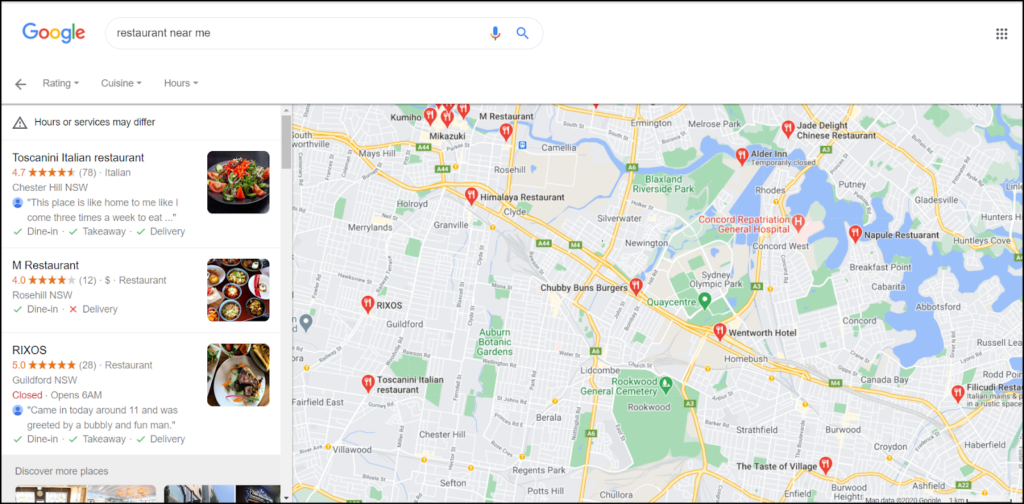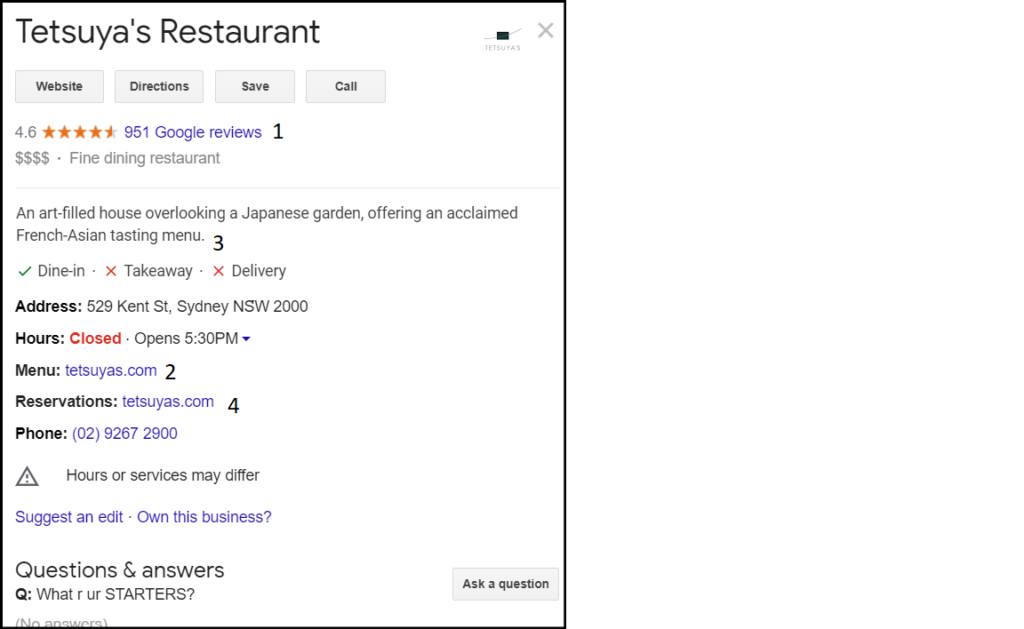A Guide on Ranking your Restaurant for “Near Me” searches
In Australia, there are an estimated 73,000 online monthly searches for the term “restaurant near me”, with common variations such as “Chinese restaurant near me” or “Indian restaurant near” me having a combined monthly search volume of over 120,000 searches.
Having your restaurant rank consistently well for “near me” searches is therefore one of the best ways to acquire new customers on a reliable basis.
Google has specific criteria that it looks to when deciding what to rank for location-specific searches. These include searches that end in a location, or in “near me”. In the latter cases, your location is determined by your IP address.
Ranking for these searches therefore requires a specific process that is distinct from “traditional” SEO.
Below is a guide on how to rank your restaurant for these popular “near me” searches and what particular criteria Google is looking for when deciding what to rank for such terms.

The importance of your Google My Business to “near me” searches
When someone searches “restaurant near me” the first results that they are presented with is a Google map embedded with local restaurants at their respective locations.
To the left of the map, there is a list of profiles of these restaurants, with the top three being visible without scrolling:
Both the embedded pointers on the map itself, and the list to the left of the map link to a restaurant’s Google My Business profile.
This means that if your restaurant does not have a Google My Business profile, they have zero chance of showing up on the map for “near me searches”.
It is therefore imperative that you create a Google My Business profile – you can do so by following these instructions.
Ultimately, Google wants to give searchers the most informative results possible.
The search engine will therefore give prominence to restaurants that have their GMB profile filled out as completely as possible.
You should try and fill out every field that you possibly can for your restaurant’s GMB listing. These fields include:
- Your restaurant’s name, address, and phone number
- Photos of both the inside and outside of your restaurant, as well as your food
- Links to your website, menu, and any booking/delivery platform that you use
- Your opening hours
- A description of the type of food that you serve, as well as the use of tags to describe your cuisine and type of service you offer (fine dining, casual etc).
- Again, all other things being equal, Google will prefer to deliver GMB listings that are completely filled out.

How citations affect your prominence in “near me searches”
As well as your GMB profile, Google also looks for citations of your restaurant’s name, address, and phone number to act as “evidence” that it exists at the relevant nearby location.
The most effective way to create these citations r is to get listed in online directories.
Directories that are either industry-specific (such as restaurant directories) or location-specific (such as Australia or Australian city directories) will have the most impact here.
Here is a list of the biggest restaurant directories to help get you started building out your citations.
When building out these citations, it is vital to keep the mentions of your restaurant’s name, address, and phone number consistent across all the directories. To Google, “Kilda Street” and “Kilda St.” are not the same entity, and this can cause confusion as to where your restaurant actually is.
Given that Google wants to display accurate results, any confusion that the search engine has over your location could see your visibility suffer when it comes to “near me” and location-based searches.
Many directories will want to you add a short bio or description of your restaurant to complete your listing. Unlike with your name, address, and phone number, you will want to make sure that these descriptions are varied between the different directories.
This is because when Google crawls blocks of text that are duplicated, it does not index it. This is to prevent the search engine from delivering the same articles repeatedly for each search.
Having the exact same text for your restaurant’s bio on each directory will therefore see some directory listings be ignored by Google, therefore diminishing their positive effect on your prominence in “near me” searches.

Improve your listing’s click-through rate to climb up the rankings
Click-through rate (CTR) refers to the number of times your restaurant’s Google My Business listing is clicked compared to your competitions.
If one profile is clicked more often than others for a particular search, then this signals to Google that the clicked profile is the best answer to a searcher’s query. Over time listings that receive a higher click-through rate will be rewarded with more prominence.
There are certain elements that you can add to your GMB listing to try and entice clicks.
Here is an example of a prominent GMB restaurant listing to illustrate what you can do to increase your click-through rate.
- Get as many positive Google reviews. Many people will simply select a restaurant that has the most amount of four and five star Google reviews. Having a high number of positive reviews will therefore dramatically increase your restaurant’s click-through rate.
- Listing your menu on your profile: Many diners will want to see what food is on offer before they choose which restaurant to go to. Making your menu accessible from your profile will win clicks from people who want to choose what they eat before they go out.
- Having an enticing description: Follow copywriting principles such as mentioning specific benefits of your restaurant will make your restaurant more appealing than your competitors.
- Having a reservation link: Again this will attract clicks from those who want to make a reservation online there and then.
As well as improving your prominence in “near me” searches over time, working to improve your click-through rate will help get the most traffic from the level of prominence that your restaurant currently has.
Looking for more SEO Tips? Check out our guide to the best SEO Tools to boost your keyword rankings.







